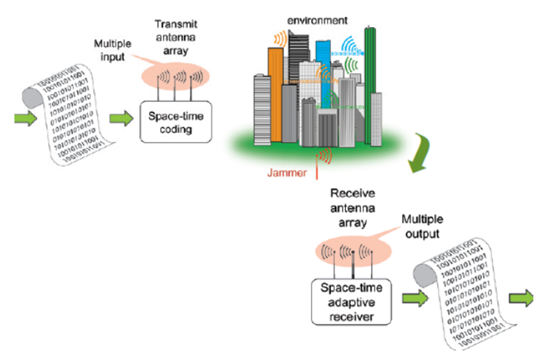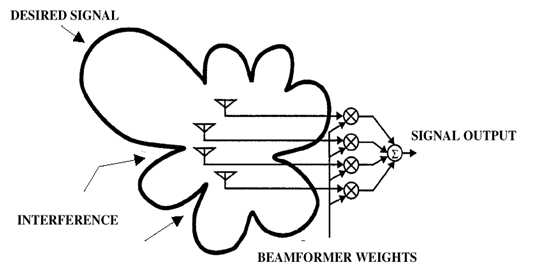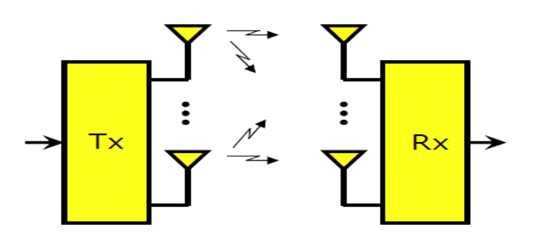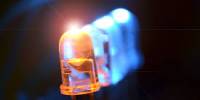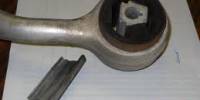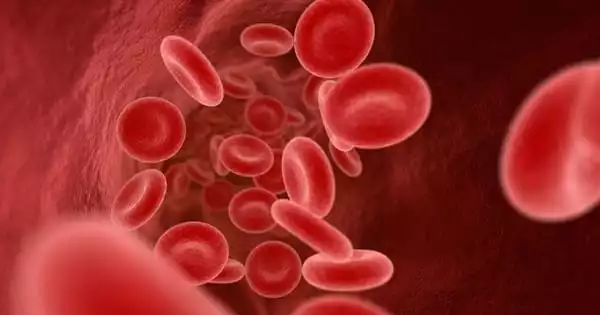Multiple Antenna Techniques
Introduction
Multiple antenna techniques are used to improve the performance of wireless links in the telecommunication field. The Multiple Input Multiple Output (MIMO) technique uses an array of antennas for both transmitting and receiving end. Using MIMO techniques we can obtain better wireless communication as compared to other techniques. The electromagnetic waves transmitted from the antennas bounce around the environment, the receiver receives these electromagnetic waves from multiple directions, with varying delays. The delay varies since the different paths have different length. The Line of Sight (LOS) between the Base Station (BS) and the Subscriber Station (SS) is often very difficult to achieve, because the SS may be located indoors.
Figure: Multi-path Environment
Multiple antenna techniques
Multiple antenna techniques are divided into three subclasses.
1. Diversity Schemes
2. Smart Antenna Systems (SAS)
3. MIMO Systems
Diversity Scheme
Diversity Scheme is a technique, which is used to improve the signal strength. In diversity scheme, two or more communication channels are used. Diversity plays an important role in reduction of fading and elimination of error burst. In diversity schemes multiple versions of the signal are transmitted and received. When these signals are transmitted the Forward Error Correction (FEC) code is added to different parts of the message. Different classes of diversity are given below.
Time Diversity
Multiple versions of the same signals are transmitted at different time instants. The FEC
Code is added to the message. Then this message is spread in time before the transmission. In other words the elements of a radio signal transmitted at the same moment in time and these elements arrive at the receiver at different moments in time, because these signals uses different physical paths, through the use of receiving antenna technology known as rake receivers and multiple input multiple output (MIMO).
Frequency diversity
In this, the signal is transmitted using different frequency channels, such as spread spectrum. OFDM modulation is also used with sub carrier and FEC.
Space diversity
In Space diversity the signal is sent over different propagation paths. In wireless communication transmit diversity is used to transmit the signal and reception diversity is used to receive the signal. In this technique, if the antennas are much more than one wavelength away from each other, this is called macro diversity and if the antennas are in the order of one wavelength, then it is called micro diversity.
Polarization diversity
In this technique multiple versions of signal are transmitted and received. It is used to minimize the effects of selective fading of the horizontal and vertical components of a radio signal. It is usually accomplished through the use of separate vertically and horizontally polarized receiving antennas.
Multi user diversity
Multi user diversity supports opportunistic user scheduling at either transmitter or receiver end. By using scheduling, the transmitter selects the best user from the candidate received according to the quality of each channel.
Smart Antenna System
The smart antenna system also called adaptive antenna system (AAS). In smart antenna system, by using signal processing techniques channel model attains channel knowledge to steer the beam towards the desired subscriber while transmitting null steering towards the interferer. The null steering cancels undesired portion of the signal and reduces the gain of radiation pattern obtained from adaptive array antenna. This is achieved by using Beam forming and null steering towards desired user. The process of combining the radiated signal and focusing it in the desired direction is called Beam forming.
Figure : Smart Antenna
Multiple Input Multiple Output (MIMO) system
In MIMO technique BS and SS both have minimum of two transmitter and receiver, per channel as shown in figure 2.2.
Generally in 802.16, for diversity schemes, following three techniques are considered.
1. Space time coding
2. Antenna Switching
3. Maximum ratio combining
Figure : Multiple Input Multiple Outputs
Space time coding technique
The 802.16 standard supports the Alamouti Scheme. In Space Time Coding, the information is sent on two transmit antennas. The information is sent consecutively in time and is called transmit information in time and space. A space–time code (STC) is a method employed to improve the reliability of data transmission in wirelessHYPERLINK “http://en.wikipedia.org/wiki/Wireless” HYPERLINK “http://en.wikipedia.org/wiki/Wireless”communication systems using multiple transmit antennas. STCs rely on transmitting multiple, redundant copies of a data stream to the receiver in the hope that at least some of them may survive the physical path between transmission and reception in a good enough state to allow reliable decoding.
Space time codes may be split into two main types:
Space–time trellis codes (STTCs) distribute a trellis code over multiple antennas and multiple time-slots and provide both coding gain and diversity gain.
Space–time block codes (STBCs) act on a block of data at once (similarly to block codes) and provide only diversity gain, but are much less complex in implementation terms than STTCs.
STC may be further subdivided according to whether the receiver knows the channel impairments. In coherent STC, the receiver knows the channel impairments through training or some other form of estimation. These codes have been studied more widely because they are less complex than their non-coherent counterparts. In no coherent STC the receiver does not know the channel impairments but knows the statistics of the channel. In differential space–time codes neither the channel nor the statistics of the channel are available.
Antenna Switching
Technique is used for capturing diversity gains. The purpose of the antenna switching is not to combine signals from the multiple antennas available, it is used to simply select the single antenna with the best channel gain at any given time. This is applicable to both downlink and uplink transmission.
Maximum Ratio Combining (MRC)
Maximum Ratio Combining (MRC) is the technique of diversity scheme which estimates channel characteristics for multiple antennas. MRC obtain diversity and array gain but does not involve spatial multiplexing in any way. In maximum ratio combining, the signal of each channel are added together and the gain of these channel is proportional to the Root Mean Square (rms) signal level and inversely proportional to the mean square noise level of these channels. Each channel has different proportionality constants, also known as ratio squared combining.
Summary
To improve the performance in the Telecommunication field its very essential techniques .Now days without multiple antenna techniques it is impossible to think communication of data transfer .The Multiple Input Multiple Output (MIMO) technique uses an array of antennas for both transmitting and receiving end .Smart Antenna Diversity Scheme, MIMO are the techniques of multiple antenna. MIMO is the best from another two. In Space Time Coding, the information is sent on two transmit antennas. In maximum ratio combining, the signal of each channel are added together and the gain of these channel is proportional to the Root Mean Square signal level and inversely proportional to the mean square noise level of these channels.
Reference
[1] Suknaic, M.; Grgic, M.; Zovko-Cihlar, B., “Interconnection between WLAN and 3GPP Networks,” MultimediaSignal Processing and Communications, 48th International
Symposium ELMAR, June 2006, Page(s):199 – 204.
[2] D. W. Bliss, “Multiple antenna techniques for wireless communications”, Lincoln Labt., Sept.2008.
[3] B. Muquet, E. Biglieri, A. Goldsmith, and H. Sari, “An analysis of MIMO techniques for mobile WiMAX systems,” in Advances in Mobile WiMAX. New York: Wiley-IEEE
Press, 2008.
[4]Alamouti Encoder,[online].Available:
http://my.opera.com/HenryFD/blog/show.dml/208195
[Accesssed: January. 27. 2011].
[5] An Overview of recent studies on wireless channel Capacity Limits , http://academic.cankaya.edu.tr/~o.gazi/wirCap.htm. Accessed :July 2011.
[6] Paulraj A., Nabar R., Gore D. Introduction to Space Time Wireless Communications.
CambridgeUniversity Press 2003.
[7]http://www.bth.se/fou/cuppsats.nsf/all/24e7808ae820eae0c12576e0003fb84a/$file/MULTIPLE_ANTENNA_TECHNIQUES_IN_WiMAX_%28_Final%20Version_%29.pdf
[8] Skjevling, Hilde. Simulation and design of MIMO algorithms for correlated wireless
channels. Ms Thesis, University of Oslo. 25 July 2003
[9] D. W. Bliss, Keith W. Forsythe, and Amanda M. chan “MIMO Wireless
Communication”, Lincoln Labt. Journal, Vol. 15, No. 1, 2005
[10]DSP LOG ,http://dsplog.com
[11] S. M. Alamouti, “A Simple Transmit Diversity Technique for Wireless Communications”IEEE Journal on selected areas in communications, VOL.16, NO. 8, October 1998. Sept.2008.
[12] E. Biglieri, R. Calderbank, A. Constantinides, A. Goldsmith, A. Paulraj and H. V. Poor, “MIMO Wireless Communications,” Cambridge University Press, 2006.
[13] J. G. Andrews, A. Ghosh, R. Muhamed, “Fundamentals of WiMAX: Understanding
Broadband Wireless Networking,” Prentice Hall, 2007.
[14] S. M. Alamouti, “A Simple Transmit Diversity Technique for Wireless Communications”
IEEE Journal on selected areas in communications, VOL.16, NO. 8, October 1998.
[15] Multiple Antenna Systems in WiMAX, [online]. Available
http://www.airspan.com/pdfs/Whitepaper_Multiple_Antenna_Systems.pdf
[Accessed: August. 12.2009
[16] OFDM Parameter in WiMAX [online]. Available:
http://www.wimax.com/commentary/wimax_weekly/2-3-3-ofdm-parameters-in-wimax-
cont [Accessed: July. 06. 2009].

